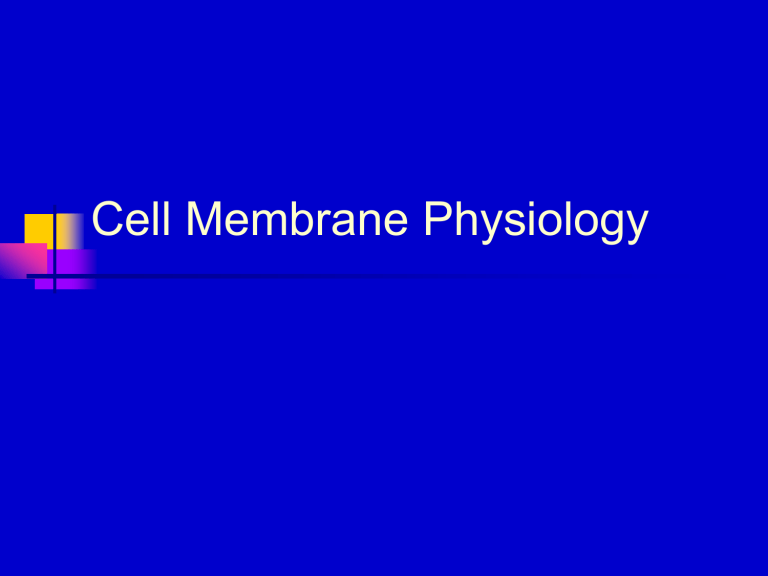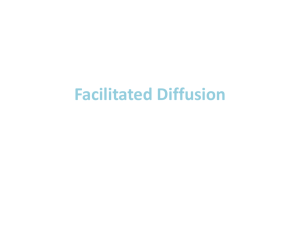
Cell Membrane Physiology Cell Membrane Gatekeeper “Selectively Permeable” – only some things can get in or out Passive Transport NO ENERGY REQUIRED !!!! Diffusion Movement from HIGH concentration to LOW concentration until equilibrium is reached Must be SMALL enough to fit through pores (holes) Must DISSOLVE in FAT Examples – oxygen, Carbon dioxide III. Passive Transport A. Diffusion Facilitated Diffusion Molecules are too big or don’t dissolve in fat Molecules use a PROTEIN channel in the membrane Still moves HIGH to LOW concentration B. Facilitated Diffusion OSMOSIS Facilitated Diffusion of WATER ONLY! Active Transport ENERGY REQUIRED !!! Solute-pumping BIG THINGS or movement from LOW to HIGH concentration ATP is used to activate a protein in the membrane NO PUMP: NO TRANSPORT (very specific) IV. Active Transport A. Solute-pumping BULK TRANSPORT Exocytosis “Exiting the cell” Golgi packages the stuff into a sac made of phospholipids Sac fuses with the membrane and spills contents out BULK TRANSPORT ENDOCYTOSIS “Into the cell” Pushes the membrane in, pinches into a sac, lysosome opens the sac B. Bulk Transport

